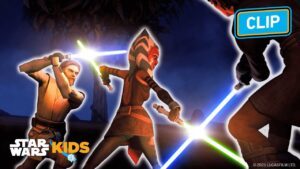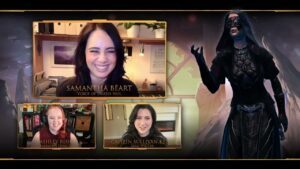I beat Dragon is Dead’s first boss at 5 AM. I died about 3 seconds later. I thought I was in a cutscene, watching him die, and I was – for about three seconds. Then the cutscene ended, and one of his little skeleton minions whacked me in the face, and I was back to the start. But I knew I had a build that worked. I felt lucky. Twenty minutes later, he went down again, and I kept going. When I finally bought it and respawned at the Fountain of Life, I was happy to drag myself to bed… but I was also already planning the next run.
What I’m saying, then, is that Dragon is Dead is a game for sickos (complimentary), and I’m sickos. Developed by Team Suneat, who you may know as the team behind Blade Assault, Dragon is Dead is part Castlevania, part Diablo, part roguelite, all pixel art hack-n-slash glory. Throw in some unique RPG and progression elements, and Team Suneat’s latest dish is shaping up to be finger-licking good.
Let’s get it out of the way: whether you’re traipsing around the corrupted, skeleton-infested remnants of a once-sacred forest or just walking through a camp of tired, worn-down, hopeless soldiers, Dragon is Dead features absolutely stunning pixel art. You can practically hear these brittle tree branches swaying in the wind and smell the desperation of the small groups of soldiers working to keep the monsters at bay. Combine that with some excellent and atmospheric music, and Dragon is Dead is selling an aesthetic – and a mood – from the word go.
But mood, tone, and aesthetics are only part of the package. Dragon is Dead plays well, too. It’s a side-scrolling hack-n-slash with an obvious reverence for Castlevania – the Spellblade’s dodge animation is a very clear callback to Alucard’s dodge animation in Symphony of the Night – but it marries that with a Diablo-esque UI and loot system that allows you to re-roll individual stats on weapons and armor. The leveling system resembles Diablo IV’s – spells and abilities are segmented into tiers like “Basic Skills” and “Core Skills” with several options and upgrades, and spending enough skill points unlocks the next tier and its corresponding abilities. It opens up some neat build opportunities that encourage you to specialize in abilities that complement each other and build your gear around those skills.
There were two classes in the build I played: the aforementioned Spellblade, who specializes in elemental magic attacks, and the Berserker, who builds Madness by using his Basic Skills and then cashes out for big damage with his Core Skills. They play very differently: the Berserker is slower, tankier, and hits harder, but the Spellblade is faster, has a more generous dodge, and can build combos by stacking skills that use the same kind of magic. Both, however, feel fantastic, and it’s fun to build a cool combination of abilities and spells to cut through the demons infesting Dragon is Dead’s world.
But what I like most so far is the way Dragon is Dead handles death and progression. This is a roguelite. That means that when you die, everything about your character resets: your level, items, power-ups like Artifacts and Soul Gems, everything that makes your build your build, with only two exceptions: your gear, and Magic Stones, a special currency that you can use to buy gear and reroll your stats. After a few runs, you’ll have a good feel for the abilities you like and the stats you’ll want on your gear to support them. Building up your gear after a run matters, but like the best roguelites, what happens during the run is what separates a close victory from a brutal defeat.
During your run, you’ll come across Magic Stones and keys that will allow you to open special chests, which are always useful, and gold you can spend at stores for temporary power-ups or new abilities; Artifacts, which will let you carry more than one potion, upgrade your health and resource pools, boost your damage, or give you special perks like making enemies more likely to drop potions or dropping more Artifacts once you open a certain number of chests; and Soul Gems, which offer flat upgrades to your core stats.
Clearing areas gives you your choice of a pair of chests that contains one of these things, but you’ll also be able to buy them in stores and find them in certain areas. There are also special chests scattered throughout the environment that you can open with unique keys you can find or buy in the store. Artifacts also have synergy, which means that finding two or more of the same type will add bonuses so you can really dish out the hurt if you’re smart about how you build during a run. If you’re looking for depth, Dragon is Dead seems like it’ll have it, but you will have to get a little lucky, too.
That means that you’ll probably have to alter your build on the fly if, say, you’re a Spellblade playing with a lighting build and you get an Artifact that boosts fire damage. Luckily, it’s easy to do… provided you have the coin. Naturally, environments also change each time you go through them, so no two runs are alike, which is good, because you’re probably going to die. A lot. At least initially.
At the start of each run, you can only carry one potion, and whether or not you’ll find another one or the ability to carry more than one at a time is largely luck. Sometimes, a run just isn’t going to work out in your favor, and you’re going to die. Because your gear – and your ability to buy more gear, reroll a stat on any piece of gear you have, and the keys to those special chests – carries over between runs, you’re always progressing, even if it may not feel that way. But once you come back to the opening town after a particularly close run and replace your Magic items with Rares, and see how fast stuff dies as a result? You really feel it.
And once you get into the groove of Dragon is Dead’s combat, it feels incredible. Like any roguelite, a lot of learning to deal with any given enemy is just practice. At first, you might not know what an enemy does or how to deal with them. The first time I fought Longmore, a three-headed tree that serves as the game’s first boss and the guy that kept me up until 5 in the morning, I had no idea how to deal with the insane number of flaming, demonic skulls he was sending at me, and when I got to him, I barely had any health left to learn. Needless to say, I died real fast.
The last time? I was cutting down the enemies standing between me and him like they were barely there, and when I made it to the fight, the skulls barely hit me. I was wearing items with more dodge, so I was avoiding some of them automatically, but I was also better at dodging them manually. I barely got hit. In my time with it, Dragon is Dead’s progression rewarded me for creating a build over time and being smart with my gear, but it also rewarded me for getting better as a player. It’s a hard line to walk, but Dragon is Dead seems like it’s on the right path.
I do have a couple of minor concerns. First, while Dragon is Dead’s lore is cool, its writing is a little flat. Characters announce who they are, what they do, how they feel, and then dispense lore without much flavor or personality. It’s a small qualm, but when everything else looks and feels so good, it does stand out. The other is that the UI, especially in shops, doesn’t always give you a good idea of how many resources of each type you have. But it’s early days, and Team Suneat has plenty of time to iron this stuff out.
Usually, when I finish previewing a game, it’s because I’ve done everything I want to do. With Dragon is Dead, I had to stop because I needed to sleep. In a world where I didn’t have to type this up, dear reader, I’m still playing Dragon is Dead. So far, it’s beautiful, feels wonderful to play, has interesting and unique progression systems that reward long-term planning and player skill, and every run feels unique. If Team Suneat can keep this up, well… the sky’s the limit. For now, I’m left thinking of the next run. In another world, I’m past Longmore, past that cave, cutting down demons and slinging spells like the daylight is never coming. Unfortunately, previews don’t write themselves. But tonight? I’m diving right back in. I have a dragon to kill.
























